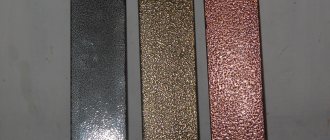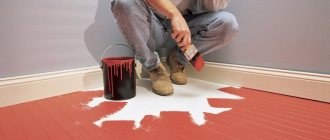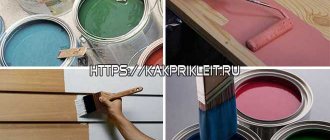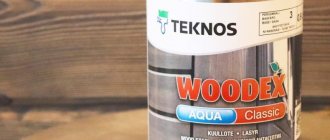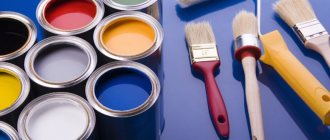To save your money, you just need to purchase the right paint in a can and paint it yourself. We offer a service - select paint and pump it into a 520 ml can using the code in 15 minutes. We use paints from the world's leading manufacturers PPG (USA), Nexa Autocolor (England), Quicline (Europe).
Selection of paint from one can
+ Control spray test -500rub
Local Repair Center: Moscow, VDNH metro station, Mira Avenue, 186-a (How to get to us)
By phone: 8-(495)-741-58-79 8-963-711-19-42 8-926-610-73-55
Consultation
We have been selecting paints and pumping them into spray cans since 2005. Experienced colorists and extensive experience allow us to take on difficult cases of paint tinting. The Laboratory has equipment for filling selected paint into a spray can.
A little history
Aerosol paint was born in the 18th century thanks to the observation skills of French confectioners. They noticed that carbonated drinks were being pushed out of the container without assistance.
This fact was brought to the attention of a scientist from Norway, who was searching for a way to apply wax to skis, which was simpler than traditional methods. He managed to invent the prototype of the aerosol can, which is currently known.
American specialists have perfected this product. It was filled with chemicals that were used to kill harmful insects. Aerosol paint in cans appeared on the chemical market in the mid-20th century. Since then, it has been used in various fields of human activity.
What is spray paint
This type of dye is a mixture of a dye mixture and substances that create a certain pressure that can force the product out of the package. The can is equipped with four components: a body, a valve, and a tube with a spray device.
The containers are filled with dye and hydrocarbon propellant. For more effective stirring, the cans contain small balls.
Basically, this paint is produced with one component, but there are also two-component products. Due to the high cost, such a product is quite rare. Aerosol unary products are divided into groups based on their bases.
Acrylic spray paint
The characteristic features of this paint are:
- Quick drying;
- Saturation and brightness of the color palette;
- Ideal softness and plasticity;
- Satisfactory adhesion to plastic surfaces.
Acrylic spray paints have low strength and resistance to weather conditions.
- Alkyd types. One of the most resistant enamels, characterized by good ability for strong adhesion to metal. The paints are characterized by sufficient resistance to various atmospheric conditions. Surfaces painted with this paint do not require additional varnish.
- Cellulose ester paints (automotive base). It practically does not fade and has an excellent decoration effect. However, the resulting matte finish requires mandatory varnishing.
- Heat-resistant type of enamel. The dye is able to withstand fairly high temperatures provided that it is thermally hardened.
- Water based paints. This product is used to create decorative coatings. If necessary, they can be washed off with water (if the surface is smooth). Available in a variety of colors, metallic, and bright fluorescent tones.
There is a wide range of types of aerosol paints on the building materials market. Similar products include:
- RAL enamels are a line of paints created according to the international color system; each color has its own code, which guarantees complete identity of the colors with the same code;
- Special enamels used in production differ in consumer properties;
- Universal aerosol paints – products in cans intended for a wide range of consumers;
- Protective lining – aerosol coatings in cans with mastic and anti-gravel are convenient for working in hard-to-reach places;
- Aerosol varnish, which has different properties, is used as a finishing coating for the product;
- Auto enamels are produced in the form of aerosols, which greatly facilitates the painting of vehicles; characterized by good quality of coating of large surfaces with economical consumption of product;
- Aerosol primers significantly improve the entire application process and also help create a perfectly flat surface. Moreover, the spray primer can be used everywhere.
Available paints in aerosol packaging vary in composition. The range of filler is designed for the specific material with which you will have to work. Basically, these are individual special elements.
Main different ingredients:
- Synthetic specialty compounds;
- Acrylic acid based polymers;
- Drying accelerators;
- Ingredients of aqueous origin;
- Additional substances;
- Various pigments.
Characteristics. Based on the variety of fillers, they also have their own differences and individual parameters.
Characteristics of aerosol paint
- Excellent ability to withstand high temperatures.
- Good wear resistance.
- Invulnerability to abrasive influences.
- Economical consumption.
- During operation, environmental protection is ensured.
- It is not necessary to prime the surface before applying paint.
- Inability to mix.
- Uniformity of the coated layer.
- Long service life and storage.
- The composition contains no harmful substances.
- Excellent insulating ability.
- Convenient when painting hard-to-reach places.
- Easy to transport.
- Wide range of colors.
Having such characteristics, products become more widespread and in demand among consumers. The spray painting process is absolutely simple.
However, you should acquire some skills. Before starting work, you need to shake the can thoroughly and vigorously (literally for a few minutes). Before painting, the surface should be cleaned of dirt, it should be smooth and dry.
Spray paint from a short distance (up to 30 cm). Since aerosol paint is much thinner in consistency than conventional paints, it is applied in two to three layers. Dries quite quickly.
In the private sector, at dachas, and country houses, plastic furniture is very popular. But over time, it loses its brightness and attractiveness. Spray paint for plastic will help to update such things.
Application Features
Everyone knows how to use paintwork materials, but when using aerosol products you need to take a special approach. So, the work is carried out in a certain order:
- The surface is first thoroughly cleaned and then polished, if necessary.
- If the wood is wet, it is better to wait until it dries completely. It is also important to ensure that there are no wood resin discharges. If there is resin, it is removed and the depression is sealed.
- Then a layer of primer is applied, which has the same composition as the paint. After the primer has dried, the surface is sanded again.
- Spray paint from a can at a distance of 25-30 cm with short presses. Painting is carried out in two or three layers with breaks for each layer to dry.
Paint selection
Knowledge of the plastic that is to be painted will help you choose the right paint, as well as the right technology for applying it.
- Cases for most household appliances, computer equipment, etc. made from ABS plastic. It is a technical thermoplastic, impact-resistant resin. It is based on a copolymer of acrylonitrile with butadiene and styrene.
- PVC plastic is more familiar as a building material.
Both types require a primer to be applied before painting, which will make the adhesion of the paint to the surface stronger and better.
Types of plastic paints
There are several varieties of this aerosol. The most popular are:
- One-component type, which in most cases is used for painting PVC plastic; the paint adheres well to the base and has a high degree of resistance to ultraviolet rays;
- Soft Touch enamel gives the surface a velvety feel and is pleasant to the touch;
- Structural paints are a reliable option that hides the smallest defects on surfaces exposed to mechanical stress;
- Paints that can provide reliable protection against damage are highly durable;
- Polymer paints are attractive because the functions of primer and dye are combined into one composition, which does not require preliminary priming; the level of adhesion is quite high.
Liquid plastic is easy to use. Properly selected paint and compliance with all nuances during the work process will bring complete satisfaction from the result.
The advantages of aerosol paint for plastic are the following:
- High degree of permeability into the smallest pores. By filling them, it covers the surface with a reliable protective layer that can repel water. Plastic painted with this paint is less susceptible to various defects.
- It does not fade under sunlight and retains its original color for a long time.
- Sufficient wear resistance.
- The paint layer is resistant to chemicals and atmospheric factors.
Types of Aerosols
Spray enamels in cans for wood can be divided into three categories, differing in properties and composition. These are alkyd, acrylic and nitro enamels.
The fact that the adhesion quality of spray paint is inferior compared to standard paints is not significant when working with wood.
The natural roughness of the wooden surface helps improve adhesion.
Acrylic compounds
The most popular dyes.
Their well-deserved fame is explained by the following advantages:
- The drying speed of the painted surface is 20 minutes/1 layer;
- various coating effects: gloss, semi-matte, matte;
- ease of use;
- good selection of colors;
- resistance to external influences and fading;
- durability;
- the possibility of reusing the remaining aerosol.
Alkyd paints and varnishes in cans
Their properties are similar to acrylic ones, however, they are toxic due to the organic components included in the composition.
Therefore, working with them without gloves and a respirator is prohibited.
Alkyd coating is not durable; the wood will need to be tinted after 12 months.
They have the lowest adhesion of aerosol materials, so they require preliminary priming of the surface.
But the palette of colors and shades is simply huge.
Nitroenamels in cans
Cellulose nitrate in such materials makes them the most toxic of those presented in the article.
There are even countries where the use of such compounds is prohibited. In our state there is no such ban, however, the use of a respirator during work is mandatory.
The advantages of the composition include low cost, quick drying and a beautiful glossy shine.
The base must be primed before painting to ensure sufficient adhesion.
By following these recommendations, you can obtain a durable and non-fading coating.
Expert advice
By listening to the recommendations of professionals, the painting will be of high quality.
- Firstly, when purchasing paint, focus on cans with replaceable tips. This version will help you adjust the width of the aerosol jet during the painting process.
- Secondly, do not rush and immediately apply one layer of paint to another. Be sure to wait until the previous layer has completely dried.
- Thirdly, on objects that are used quite often and regularly, it is worth applying several layers of paint.
By observing these small and simple manipulations, strictly following the stages of the process, and performing all the subtleties of painting, an excellent result is guaranteed.
Selection and type of paints filled into the can
Matte effect Paint that has no shine.
-matte effect Subtle shine, the main difference from matte paint.
Glossy effect Paint with shine and gloss.


